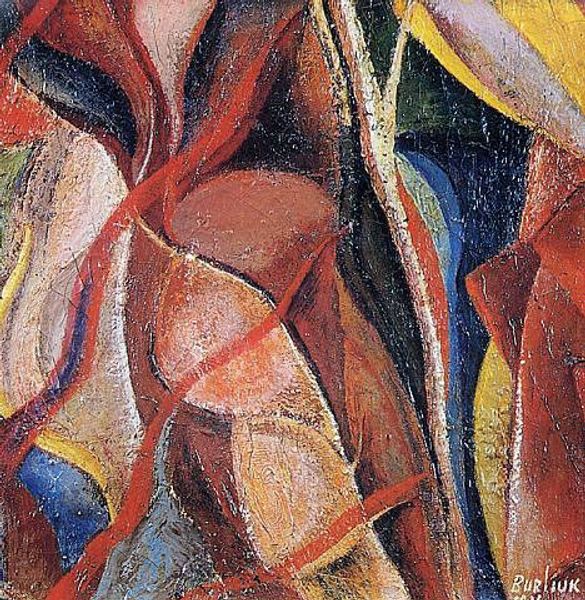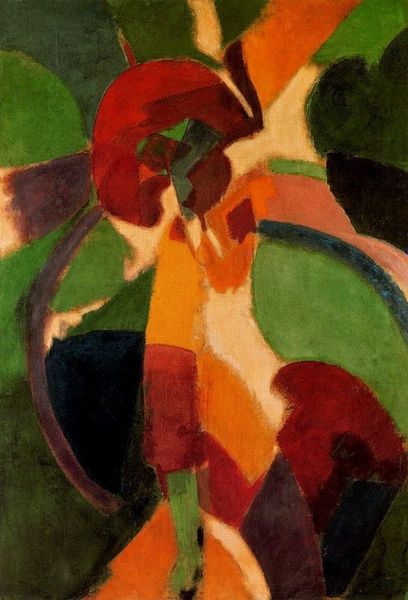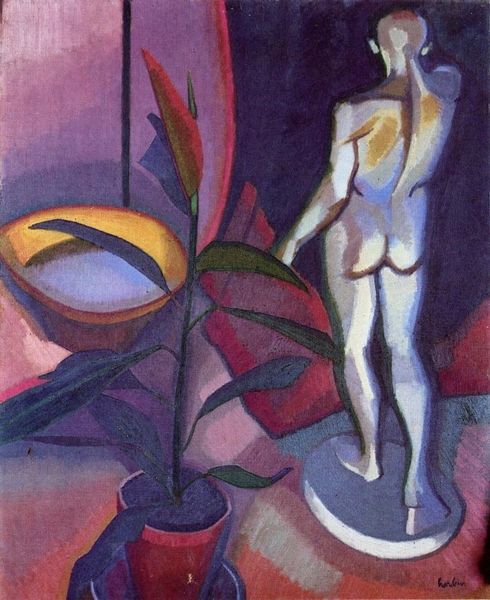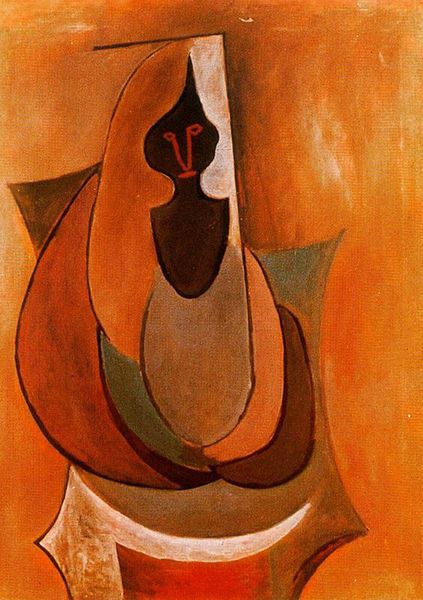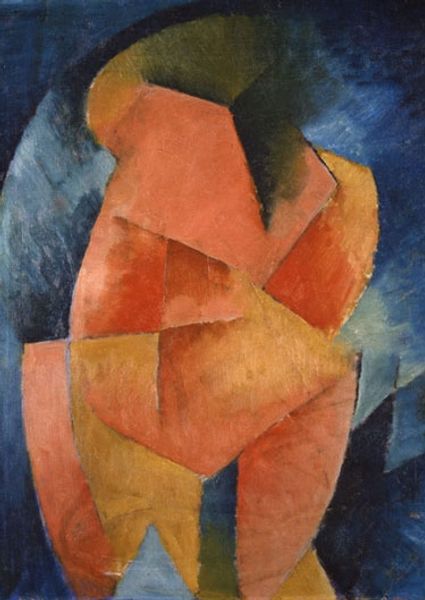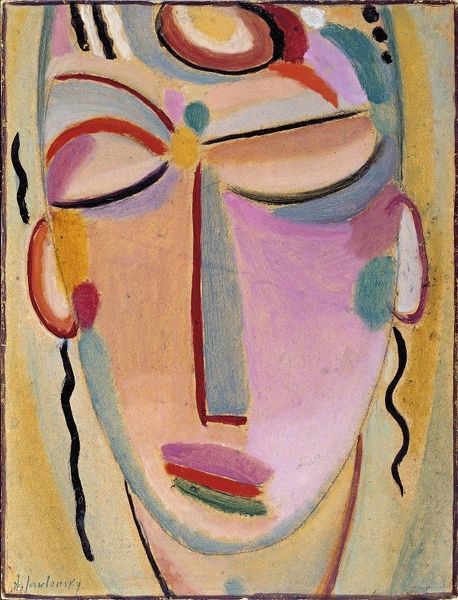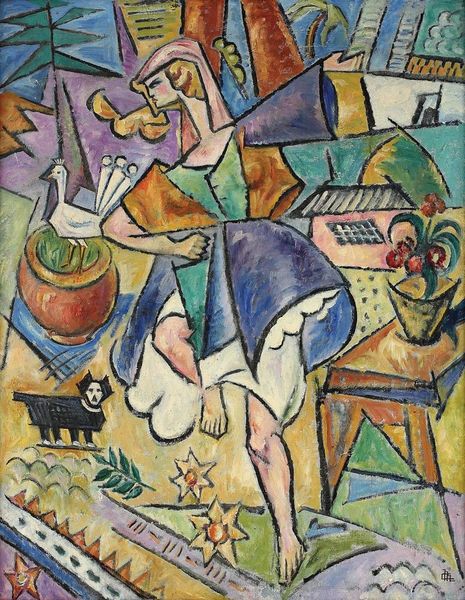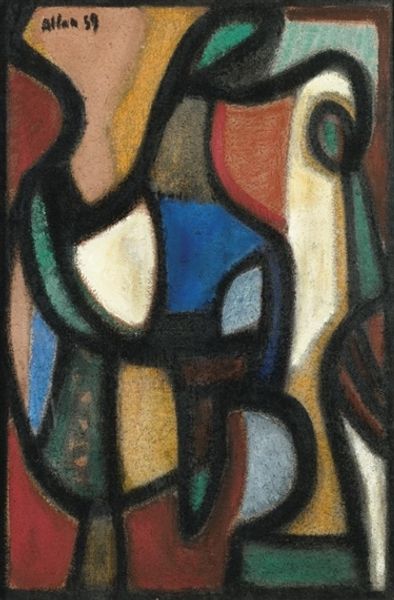
painting, oil-paint
#
portrait
#
cubism
#
abstract painting
#
painting
#
oil-paint
#
oil painting
#
geometric
#
abstraction
#
futurism
Copyright: Public domain
Curator: Immediately striking! A symphony of warm hues. I wonder how he achieved this dynamic play of forms? Editor: You're right, the earthy palette does make it glow. This is Amadeo de Souza-Cardoso’s "Head", painted in 1913. An oil painting, if you get up close, you can almost trace the process through the layering of brushstrokes. Curator: "Head", indeed. Deconstructed and re-synthesized, one might say. The artist is pulling apart conventional portraiture. I see elements of Cubism and Futurism converging in its fragmented planes and suggested movement. Editor: Exactly! Look at how Souza-Cardoso experiments with texture. You've got rough patches, almost gritty, playing against smoother, blended areas. I think he was interested in how the materiality of paint could embody speed and force. Think about the war years closing in and artists working flat out, knowing they have something important to contribute to society. Curator: A fascinating interpretation. And how the structure invites us to reconstruct the implied subject. Is it a portrait dissolving before our eyes? Or coalescing from pure form? A philosophical head rather than an actual one? The dynamic arrangement keeps the observer questioning their reading. Editor: Questioning, yes, and experiencing a sensory impression. Imagine the artist, in his studio, building layer upon layer with these different viscosities of paint. I see his decisions documented right there in the final product. He leaves them almost naked, as a statement. Curator: Perhaps we see him dismantling representational modes as a declaration of a new artistic language. He appears to break forms in a search of meaning and, consequently, builds visual rhythm that invites reflection beyond superficial representation. The power lies within the structure itself, the interaction between elements. Editor: But it’s a language created by specific actions and decisions. The selection of that ochre, the loading of the brush—these are not abstract ideas but concrete movements in the artist's process of creation, a physical and intellectual engagement. Curator: Agreed. We can consider it both as deconstruction of a known reality or as affirmation of what painting is at its core: pictorial structures built by signs that compose something new. It brings a heightened awareness of artistic possibilities. Editor: It reveals to the public the work made with human hand, time, and resources that were employed by de Souza-Cardoso in his pursuit for innovative language that will stay in history. A legacy rooted in action as much as vision.
Comments
No comments
Be the first to comment and join the conversation on the ultimate creative platform.


